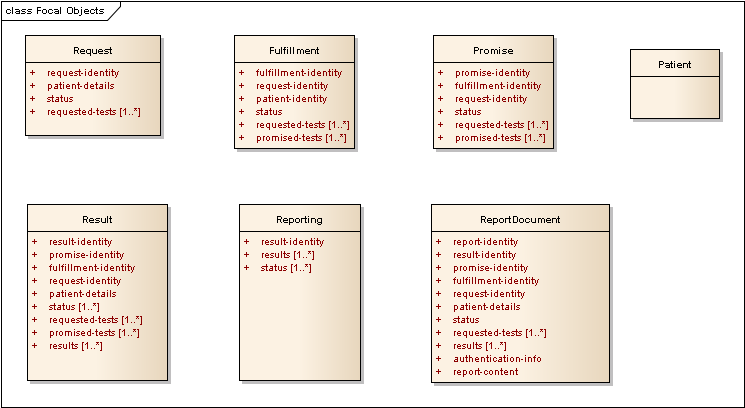This wiki has undergone a migration to Confluence found Here
OO Behavioral Model Conceptual Specification
Link back to project page BF Alpha Project
Contents
Executive Summary
Information Viewpoint
Analysis Information Model
Comment: Provide links to the Analysis Information Model for the domain
The following classes were derived from the storyboards and use cases.
Solution Specification
Scenario #1 - Simple Lab Order
Overview
Business Scenario
Contract Roles and Agents
Computational Viewpoint
Service Dependencies
Implemented Patterns
Contractual Semantics and Issues
Computational Services
Order Request Manager
Overview
- Service Description and Purpose
Comment What is the service? Why do we care? Articulation of the Business purpose of the specification Description of the functional capabilities in business terms
- Scope
Comment
Describe the overall potential scope of the service. Are any items being specifically excluded from the scope? Why?
- Reason why the service is necessary
Comment
Rationale for creating this specification. Consumer viewpoint and the value offered by the work product
Links to Use Cases/ Storyboards
- (optional, depending on detail in interop business scenario section
Structure of the Service
- Organization
Comment Elaborate any logical groupings that emerge from the usage scenarios
- Assumptions and Dependencies
Comment Upon what services does this specification depend (underpinning infrastructure, other HL7 services, etc. Are there any key assumptions that are being made?
- Implementation Considerations
Comment
Relevant and representative examples of deployment scenarios. Consider representation formalism and the intended audience, not necessarily rigorously expressing the content in UML. This specification in the real world (e.g., relationships to existing infrastructure, other deployed services, dependencies, etc.). Consider the ways that information bindings will be realized through the operations. If necessary, outline a strategy for this binding.
Detailed Functional Model for Each Operation
Name
Description
Pre-Conditions
Conceptual Information Objects
Inputs
Outputs
Post-Conditions
Exception Conditions
Aspects left for Technical Bindings (optional)
Reference to Functional Profiles (optional)
Notes
Profiles
- Introduction
- Functional Profiles
- Information Profiles
